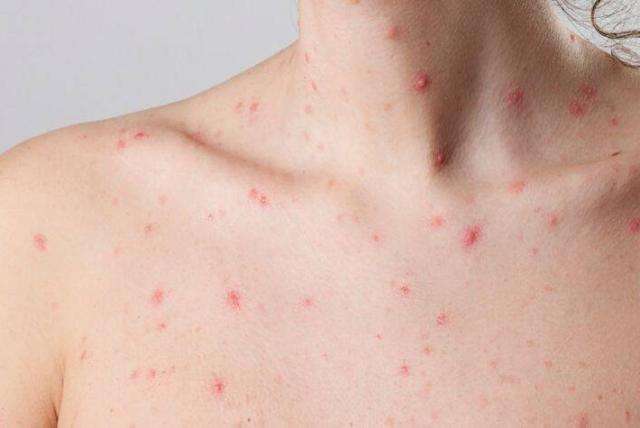Almost five months after reporting the first cases of monkeypox (or monkeypox) outside of Africa, the trend continues to be towards “remission” of the outbreak, especially in Europe and the United States. so what He said fifteen days ago the director of the WHO, Tedros Adhamon Ghebreyesus, although he warned that “this is not the time to relax or lower our guard.” “Affected countries and communities must continue to work to diagnose and treat new cases as well as to prevent infections.” At this time the epicenter of the problem is in America, with the United States, Brazil, Mexico and Peru, as the countries that report the most cases. The above implies a change, keep in mind that the first cases were reported in Europe, which for several weeks was at the head of the number of diagnosed, before it spread to the rest of the world.
Precisely, the Old Continent touched on September 29 the 25 thousand cases of the disease, exactly 24,662, which meant 366 more than the previous week, according to the published data by the European Center for Disease Control and Prevention (ECDC) and the World Health Organization (WHO) Regional Office for Europe. By country, Spain is still in the lead with 7,149 cases, followed by France (3,970), the United Kingdom (3,635), Germany (3,607), the Netherlands (1,223) and with less than a thousand: Portugal (917). , Italy (846), Belgium (770) and Switzerland (513). To date, 710 hospitalizations have been reported, which represents 6%, of which 232 have required clinical care; five have been admitted to the ICU and all have died. Most of the cases in the region were between 31 and 40 years old (9,643, for 39%) and are men (24,039, for 98%). Of those with a known sexual orientation, 96% identify as men who have sex with men (MSM). Finally, 38% of cases with known serological status are HIV seropositive (3,730/9,887).
In the United States also the trend is decreasing in the number of cases, what public health officials attribute to vaccination, and changes in behavior in those most exposed. In the past week, infections have averaged around 200 cases a day, after peaking at 450 in mid-August. “The goal is eradication. The prediction is that we will get very close.” said Demetre Daskalikis, deputy federal response coordinator. “The curve is going to go down and it is possible that sporadic events will happen if we continue with the great efforts of Washington DC and other jurisdictions to vaccinate people.” A CDC report said the outbreak would most likely remain concentrated in men who have sex with men “with cases slowing in the coming weeks and falling significantly in the coming months.” However, experts warn that they may rise again if people begin to let their guard down, or if the protection from vaccines turns out to be temporary.
the northern nation reported on September 30, 25,613 cases, with states such as California (4,886), New York (3,914), Florida (2,520), Texas (2,311), Georgia (1,785) and Illinois (1,306) in the lead , with 65.3% of the total number of patients in the country. Despite the decline in the total number of new cases in recent weeks, serious infections have appeared among men, the majority of whom are Latino and black, that is, the most disadvantaged communities. The CDC issued an advisory to doctors, alerting them to “serious manifestations of the disease” in men with weakened immune systems because they have advanced HIV. In many cases these patients have had more than 100 injuries and recommends “determine the serological status” of all sexually active adults or adolescents with suspected or confirmed monkeypox. It also points out that 38% of people diagnosed with the disease were “co-infected with HIV” and most cases with serious manifestations occurred among people “who lived with HIV without treatment.” It further warns that some of these patients have experienced “prolonged hospitalizations or significant morbidity” and as the outbreak has progressed, an increasing proportion of cases have been identified among Black and Hispanic/Latino people who are “disproportionately” affected by the disease. The hiv.
In Latin America, Brazil leads the way with 7,624 cases, followed by Peru (2,480), Colombia (2,042), and Mexico (1,627). The situation in the subcontinent it becomes more complex due to difficulties in identifying transmission chains, in Colombia 77.1% of cases have “a source [de infección] unknown”. Equally or more worrying is the situation in Argentina which since the end of May has confirmed 326 cases, with an increase in August of 300% and a new increase of 42% of cases reported every seven days in the first two weeks of September. 61.6% of the diagnoses in that country were made in the last month and although the disease remains concentrated in Buenos Aires with 97% of the cases, it has already been registered in other provinces.
In Peru, the situation is similar with 1,929 (77.8%) cases of the total in the capital of the country. The Andean nation’s health minister, Jorge López, pointed out that work is being done on the care of those confirmed, as well as the monitoring of contacts “to prevent this virus from spreading.” Regarding the vaccine, López said that Peru is working with the Pan American Health Organization (PAHO) to define which countries will buy the monkeypox vaccine en bloc. “There has to be a minimum purchase of 100,000 doses so that PAHO can make the purchase,” he pointed.
This is one of the reasons why the outbreak is clearly expanding in the region. While in the United States there are already 800,000 people vaccinated, among the most exposed, Latin America has not yet received a single dose of the vaccine. A report The CDC reported that “although conclusive data are not yet available,” people who have not received even one dose of the vaccine may be 14 times more likely to get sick than people who received at least one dose two weeks earlier. While recommending placing two doses.
Meanwhile, in Cuba the health authorities reported yesterday Saturday about the fourth case in our country. This is a 26-year-old health worker residing in the province of Cienfuegos who had direct contact with the third case reported in Cuba with monkeypox. “He is evolving favorably and without complications,” reported the MINSAP, which in the same note clarified that the rest of the isolated contacts for the third case remained asymptomatic on the eighth day of surveillance.
Monkeypox or monkeypox remains a worrying reality for many people and regions of the world, until September 30 they had diagnosed 68,017 cases worldwide, 67,328 in countries that historically did not report cases; a total of 106 nations have made at least one diagnosis, of which 99 have no history of endemism. A significant fact is that of the 28 deaths reported this year, 15 correspond to places where the disease historically usually occurs, despite the fact that only 689 cases have been reported in those 7 countries. That is, with 1.01% of the total cases, they accumulate a mortality of 53.6%. Additionally, the United States is beginning to see a disproportionate number of severe cases in Hispanic/Latino and Black communities, while the lack of access to vaccines represents a major brake on greater control of the disease in Latin America, which could imply that the outbreak extended in time.


















